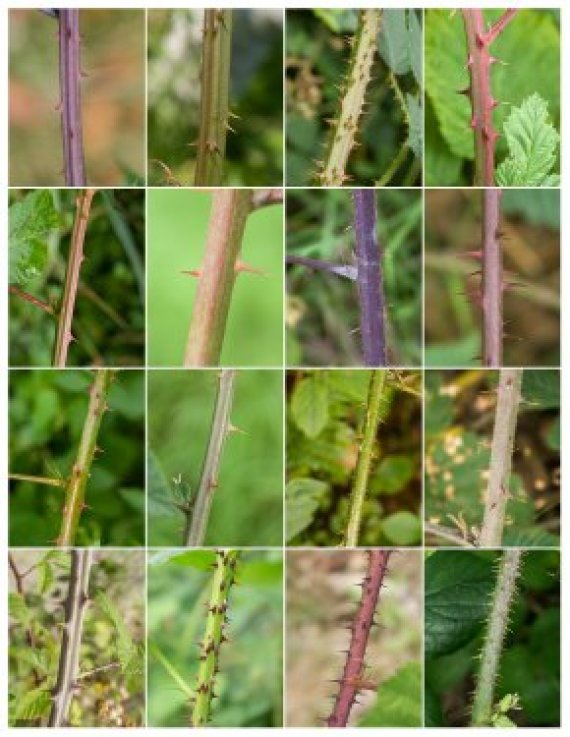(Foto’s: Iris de Ronde, Rense Haveman)A batologist is an expert on brambles. Haveman estimates he is one of only ten batologists in the Netherlands. After nine years of studying, he knows everything about brambles in the Netherlands and its neighbouring countries. Today, he will defend his PhD thesis on this subject, which was entitled ‘Concealed diversity’.
Most brambles are apomictic, which means that they reproduce via seeds, but without the need for fertilisation. ‘A recombination of the genetic information takes place. Only the hereditary information of the mother is passed on. This means that the daughter plants are clones. Basically, they are plants without a father’, explains Haveman. There is an ongoing discussion among biologists about whether apomictic plants should be seen as separate species. Apart from their reproduction, this is also connected to their sometimes very limited area of spread, which is also an obstacle for them to be recognised as a separate species.
Evidence
Haveman has a clear opinion on the subject. ‘A conclusive definition of a species cannot be formulated. There are always conditions and exceptions to the rule. There is no starting point to be found. The only thing that can be done is provide evidence that there truly are different evolutionary lineages. This evidence can be in the form of a morphological difference, a difference in ecology, genetic differences, or characteristic ranges.’ According to Haveman, all information is pointing to the conclusion that apomictic brambles can be classified as several different species.
This is an important conclusion, as acknowledgement of the species would mean they would get additional attention in management and policy. In the current situation, all these species of brambles are not considered in the official listings of vegetation and biodiversity. Haveman: ‘I know a species that only occurs near Winterswijk. It is very peculiar for a local scenery to be so full of this one species of bramble. What caused this? Why is it confined to this scenery? However, this bramble does not exist officially. That is strange.’
Hotspot
The Netherlands is a hotspot for brambles. According to an inventory drawn up by Haveman and his colleagues, the Netherlands has 191 different species of brambles. Only 22 of those are common. On a national level, 142 species are rare or very rare. These are not details in taste. Haveman: ‘The colour varies greatly, the size of the thorns, the shape and growth patterns of the leaves. Some brambles grow straight up, others wind or creep.’
This is about the individuality of the landscape and region. We should b proud of this
Rense Haveman
Haveman mapped the diversity in North-western Europe and discovered the underlying pattern. According to him, the brambles can be traced back to six primeval lineages, that have gone partially extinct. ‘A large part of the pattern can be traced back to evolution and hybridisation of the primeval lineages. That means these species originated locally.’ As a plant sociologist, Haveman discovered that there are many more types of bramble thickets – combinations of plants that occur together – than the five officially described associations of plant communities. Currently, ten associations have been distinguished.
Besides, all this variation is not randomly distributed, but depends on the soil, the land use, the history of the landscape and human management. Haveman wants more attention for this diversity in brambles. ‘This is about the individuality of the landscape and region. We should be proud of this, and that starts with acknowledging these brambles as a species, including them in listings of biodiversity and a spot on the Red List.’


